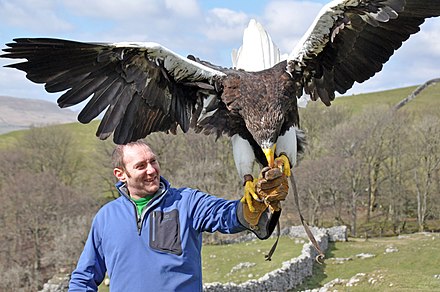Steller’s sea eagles are known for their impressive size, strength, and hunting prowess. These majestic birds are the largest of all sea eagles, and they are renowned for their ability to catch live prey, primarily fish. However, what many people may not know is that Steller’s sea eagles are also opportunistic feeders and will readily consume dead animals when live prey is scarce.
Steller’s Sea Eagles and Their Dietary Habits
Steller’s sea eagles are primarily fish-eaters, with salmon and trout being their preferred prey. They use their powerful talons and sharp beaks to catch and tear apart their prey, often while soaring over the water or perched on the shoreline. These eagles are known for their impressive hunting skills, and they are capable of taking down large fish with ease.
Consuming Dead Animals
 Image source: stellers sea eagle
Image source: stellers sea eagle
While Steller’s sea eagles are primarily fish-eaters, they are also known to consume a variety of other food sources, including dead animals. In the wild, these eagles have been observed feeding on the carcasses of seals, rabbits, ducks, geese, and even deer. This behavior is likely a result of the eagles’ need to find alternative sources of protein when live prey is scarce or difficult to come by.
Scavenging Behavior
Steller’s sea eagles are skilled scavengers, and they will often take advantage of opportunities to feed on dead animals. They may come across the remains of animals that have died from natural causes, such as disease or old age, or they may find the carcasses of animals that have been killed by other predators. The eagles will then use their powerful beaks and talons to tear apart the flesh and consume the meat.
Feeding at Zoos
At zoos and other captive facilities, Steller’s sea eagles are often fed a variety of food sources, including fish, rats, chicks, and mice. This helps to ensure that the eagles receive a balanced and nutritious diet, even when live prey may not be readily available.
Threats to Steller’s Sea Eagles
Despite their impressive size and hunting abilities, Steller’s sea eagles face a number of threats in the wild. These include habitat alteration, logging, pollution, overfishing, and lead poisoning from eating deer carrion killed by lead shot. As a result, the species is currently classified as vulnerable to extinction, with fewer than 5,000 individuals remaining in the wild.
Conclusion
In conclusion, Steller’s sea eagles are not only skilled fish-hunters but also opportunistic feeders that will readily consume dead animals when live prey is scarce. These impressive birds are the largest of all sea eagles, and they play a crucial role in the ecosystems where they live. However, they face a number of threats that have led to a decline in their population, and conservation efforts are crucial to ensuring their long-term survival.
References:
– https://www.zoonewengland.org/franklin-park-zoo/our-animals/birds/steller-s-sea-eagle/
– https://birds.fandom.com/wiki/Steller%27s_Sea_Eagle
– https://weirdnwildcreatures.fandom.com/wiki/Steller%27s_Sea_Eagle
– https://denverzoo.org/ursula/
– https://animalia.bio/stellers-sea-eagle

